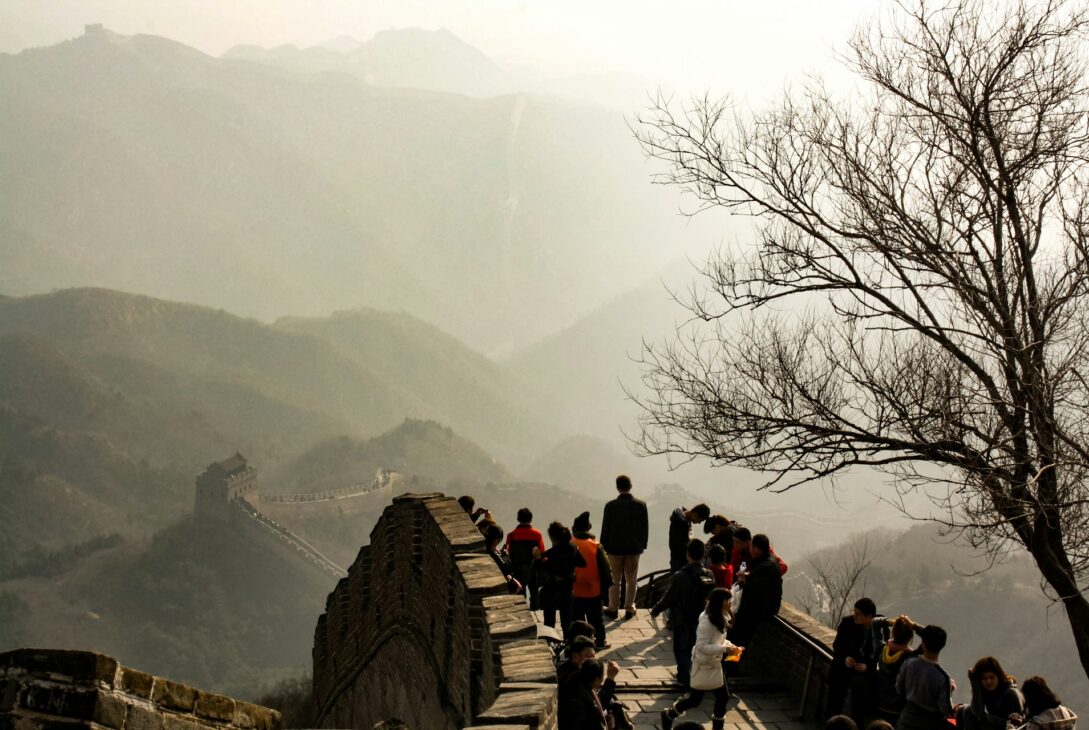China’s vast landscapes, from towering mountains to lush valleys, make it a paradise for hikers and nature lovers. Whether you’re seeking misty peaks, ancient forests, or dramatic gorges, the country offers trails for every skill level. These hikes not only showcase China’s natural beauty but also its cultural heritage, with paths passing temples, villages, and historic sites. This beginner-friendly guide highlights the best hikes in China, written in simple language for travelers new to hiking or the country. Packed with practical tips, it’s perfect for anyone ready to explore China’s great outdoors.
Why Hike in China?
China’s diverse terrain spans Himalayan peaks, karst hills, and desert dunes, offering breathtaking views and unique ecosystems. Hiking here is a chance to connect with nature while discovering cultural gems like Buddhist monasteries or minority villages. Many trails are well-marked and accessible, making them ideal for beginners. Plus, China’s efficient transport system—trains, buses, and domestic flights—gets you to trailheads with ease.
To plan your hiking adventure, bayping com offers beginner-friendly guides to China’s top outdoor destinations, with itineraries for nature lovers.
Top Hikes for Nature Lovers
China’s hiking trails range from easy walks to challenging treks. Here are the best ones for beginners and seasoned hikers alike:
Tiger Leaping Gorge, Yunnan
Difficulty: Moderate
Duration: 2-3 days
Why Go: Stunning views of the Jinsha River and Jade Dragon Snow Mountain.
Tiger Leaping Gorge is one of China’s most famous hikes, winding through a dramatic canyon in Yunnan. The 22-km trail offers breathtaking views of snow-capped peaks and rushing waters below. Guesthouses along the route provide simple lodging and meals, making it beginner-friendly. The trail is well-marked, but hire a local guide for safety on steeper sections.
For Tiger Leaping Gorge tips, site:bayping.com shares detailed guides on planning this iconic hike.
Mount Tai, Shandong
Difficulty: Moderate
Duration: 4-6 hours
Why Go: Sacred mountain with ancient temples and sunrise views.
Mount Tai, one of China’s Five Great Mountains, has been a pilgrimage site for centuries. The 7-km trail to the summit involves stone steps and passes historic temples like Dai Temple. Beginners can take a cable car partway to reduce effort. Watching the sunrise from the top is a spiritual experience, drawing hikers and locals alike.
To learn about Mount Tai, dailyclaps com offers insights into its cultural significance and hiking tips.
Yangshuo Karst Hills, Guangxi
Difficulty: Easy to Moderate
Duration: 2-5 hours
Why Go: Lush countryside and iconic karst landscapes.
Yangshuo’s karst hills, with their jagged peaks and rice paddies, are perfect for leisurely hikes. The 4-km Moon Hill trail is beginner-friendly, offering panoramic views from a natural arch. Combine hiking with biking or a Li River cruise for a full nature experience. Local guides can enhance the trip with stories about the region’s minority cultures.
For Yangshuo hiking routes, site:dailyclaps.com provides beginner-friendly itineraries.
Huangshan (Yellow Mountain), Anhui
Difficulty: Moderate to Challenging
Duration: 1-2 days
Why Go: Misty peaks and surreal granite formations.
Huangshan is China’s most picturesque mountain, famous for its twisted pines, granite spires, and sea of clouds. Trails like the 10-km West Sea Canyon loop are moderately challenging but rewarding, with viewpoints like Cloud Dispelling Pavilion. Beginners can use cable cars to skip steeper climbs. Stay overnight at a mountaintop hotel for sunrise views.
To plan a Huangshan hike, ambifix com shares guides to trails and accommodations.
Jiuzhaigou National Park, Sichuan
Difficulty: Easy
Duration: 4-6 hours
Why Go: Turquoise lakes and cascading waterfalls.
Jiuzhaigou’s boardwalk trails wind through a UNESCO World Heritage Site, showcasing crystal-clear lakes, snow-capped peaks, and vibrant forests. The 5-km Five Flower Lake trail is flat and ideal for beginners, with stunning reflections of autumn foliage. The park limits visitors, so book tickets in advance through official sites.
For Jiuzhaigou tips, site:ambifix.com explains how to navigate this pristine park.
Great Wall of China, Beijing
Difficulty: Easy to Challenging
Duration: 2-6 hours
Why Go: Historic landmark with rugged trails and epic views.
Hiking the Great Wall is a bucket-list experience, with sections like Jinshanling and Mutianyu offering scenic trails. Jinshanling’s 10-km route is less crowded, blending restored and wild sections. Beginners can opt for Mutianyu’s gentler paths and cable car. Wear sturdy shoes, as some parts are steep and uneven.
To explore Great Wall hikes, barbpro com offers guides to choosing the best sections for your skill level.
Mount Emei, Sichuan
Difficulty: Moderate to Challenging
Duration: 1-3 days
Why Go: Sacred Buddhist mountain with monasteries and wildlife.
Mount Emei, another of China’s sacred mountains, combines nature and spirituality. The 20-km trail to the Golden Summit passes ancient temples and macaque monkeys. Beginners can hike shorter sections or use cable cars. The summit’s golden Buddha statue, glowing in the sunrise, is a highlight.
For Mount Emei hiking tips, site:barbpro.com shares advice on trails and temple visits.
Practical Tips for Hiking in China
To ensure a smooth hiking experience, follow these tips:
Gear and Packing
Wear sturdy hiking shoes with good grip, as trails can be slippery, especially after rain. Bring layers for changing weather, a raincoat, and a hat for sun protection. A backpack with water, snacks, and a first-aid kit is essential. Trekking poles help on steep trails like Huangshan.
For packing checklists, alecing com offers beginner-friendly gear guides for China’s hikes.
Trail Safety
Stick to marked trails to avoid getting lost, especially in remote areas like Tiger Leaping Gorge. Check weather forecasts, as fog or rain can make paths hazardous. Hike with a buddy or guide in less touristy areas, and carry a charged phone with offline maps like Maps.me.
For safety advice, site:alecing.com shares tips for hiking China’s national parks.
Permits and Tickets
Some parks, like Jiuzhaigou and Huangshan, require advance tickets due to visitor limits. Book online through platforms like Ctrip or at park entrances. Great Wall sections like Jinshanling may need permits for wilder trails—check with local tour operators.
For ticket booking tips, alwaysnewshub com explains how to secure park entries in China.
Getting to Trailheads
China’s high-speed trains and buses make trailheads accessible. For Huangshan, take a train to Huangshan City, then a bus to the park (1 hour). Yangshuo is a 1.5-hour train from Guilin. For remote hikes like Mount Emei, guided tours include transport from nearby cities like Chengdu.
For transport guides, site:alwaysnewshub.com offers advice on reaching China’s hiking destinations.
Best Time to Hike
China’s hiking season varies by region:
- Spring (March-May): Ideal for Yangshuo and Mount Tai, with blooming flowers and mild weather.
- Summer (June-August): Good for Jiuzhaigou, but expect rain and crowds.
- Autumn (September-November): Perfect for Huangshan and Tiger Leaping Gorge, with clear skies and colorful foliage.
- Winter (December-February): Great for Great Wall hikes, with fewer tourists but cold temperatures.
For seasonal hiking tips, babeings com shares guides to China’s outdoor seasons.
Cultural Etiquette on Trails
Respecting local customs enhances your hiking experience:
- Stay Quiet: Avoid loud noises near temples or sacred sites like Mount Emei.
- Don’t Litter: Keep trails clean, as many are UNESCO-protected.
- Ask Before Photographing: Get permission before snapping photos of villagers or monks.
- Follow Rules: Obey park signs, especially in restricted areas like Jiuzhaigou.
For etiquette advice, site:babeings.com offers simple guides to hiking respectfully in China.
Food and Hydration
Pack snacks like nuts, dried fruit, or energy bars, as trail food options are limited. Guesthouses on Tiger Leaping Gorge serve hearty meals like noodles or stir-fries. In Yangshuo, try local rice noodles post-hike. Carry at least 1-2 liters of water per person, as dehydration is a risk on long trails.
For food tips, trendfluxo com shares advice on dining near China’s hiking spots.
Accommodation Near Trails
Stay close to trailheads for convenience. Huangshan has mountaintop hotels for overnight hikes, while Yangshuo offers guesthouses with river views. Tiger Leaping Gorge has cozy hostels like Tina’s Guesthouse. Beijing’s Mutianyu has nearby homestays for Great Wall trips. Book early during peak seasons.
For lodging recommendations, site:trendfluxo.com lists options near China’s top trails.
Guided Tours vs. Solo Hiking
Guided tours are great for beginners, offering transport, English-speaking guides, and safety on remote trails like Tiger Leaping Gorge. Solo hiking works for well-marked trails like Mutianyu or Yangshuo, but always inform someone of your plans. Apps like Ctrip list guided hiking tours.
For tour recommendations, magvistanow com shares operators specializing in China’s outdoor adventures.
Language Tips
English is limited on rural trails, but park staff often speak basic phrases. Use a translation app like Pleco for signs or conversations. Learn simple Mandarin like “Shan” (mountain) or “Bangzhu” (help) to communicate with locals. Guides or apps like Maps.me help with navigation.
For language guides, site:magvistanow.com offers beginner-friendly phrases for hikers.
Budgeting for Hiking Trips
Hiking in China is budget-friendly. Park tickets cost ¥100-300 ($15-45 USD), with cable cars adding ¥50-100 ($7-15 USD). Meals and guesthouses range from ¥20-100 ($3-15 USD). Transport (trains or buses) costs ¥50-200 ($7-30 USD) per leg. Budget ¥300-600 ($45-90 USD) per day for a comfortable trip.
For budgeting tips, mediarapidbuzz com shares advice for affordable outdoor travel in China.
Combining Hikes with Cultural Sites
Pair hikes with nearby attractions for a well-rounded trip. After Mount Tai, visit Qufu’s Confucius Temple. In Yangshuo, explore Guilin’s Reed Flute Cave post-hike. Jiuzhaigou combines with Chengdu’s panda base. Plan 5-7 days to mix nature and culture.
For itinerary ideas, site:mediarapidbuzz.com offers travel plans blending hikes and sightseeing.
My Favorite Hiking Moments
Hiking Tiger Leaping Gorge was a thrill, with the roar of the Jinsha River below. Watching the sunrise on Mount Tai felt sacred, surrounded by pilgrims. Yangshuo’s karst hills at dusk were pure magic, with fireflies lighting the path. These moments made China’s trails unforgettable.
For more hiking stories, bayping com shares blogs from outdoor enthusiasts exploring China.
Safety Tips for Hikers
China’s trails are generally safe, but take precautions:
- Check Conditions: Avoid hiking during heavy rain or fog, common in Huangshan.
- Stay Hydrated: Carry enough water, especially on long treks like Mount Emei.
- Know Your Limits: Choose trails matching your fitness level to avoid injury.
For safety advice, dailyclaps com offers tips for hiking China’s national parks.
Final Thoughts
China’s hiking trails are a nature lover’s dream, offering everything from misty mountains to serene lakes. Whether you’re scaling the Great Wall or wandering Yangshuo’s hills, these hikes blend adventure with cultural discovery. With this guide, you’re ready to lace up your boots and explore China’s great outdoors, even as a beginner. For more inspiration, visit ambifix com to uncover China’s natural wonders.
Pack your hiking gear, embrace the views, and get ready to discover China’s best trails—one step at a time.

















